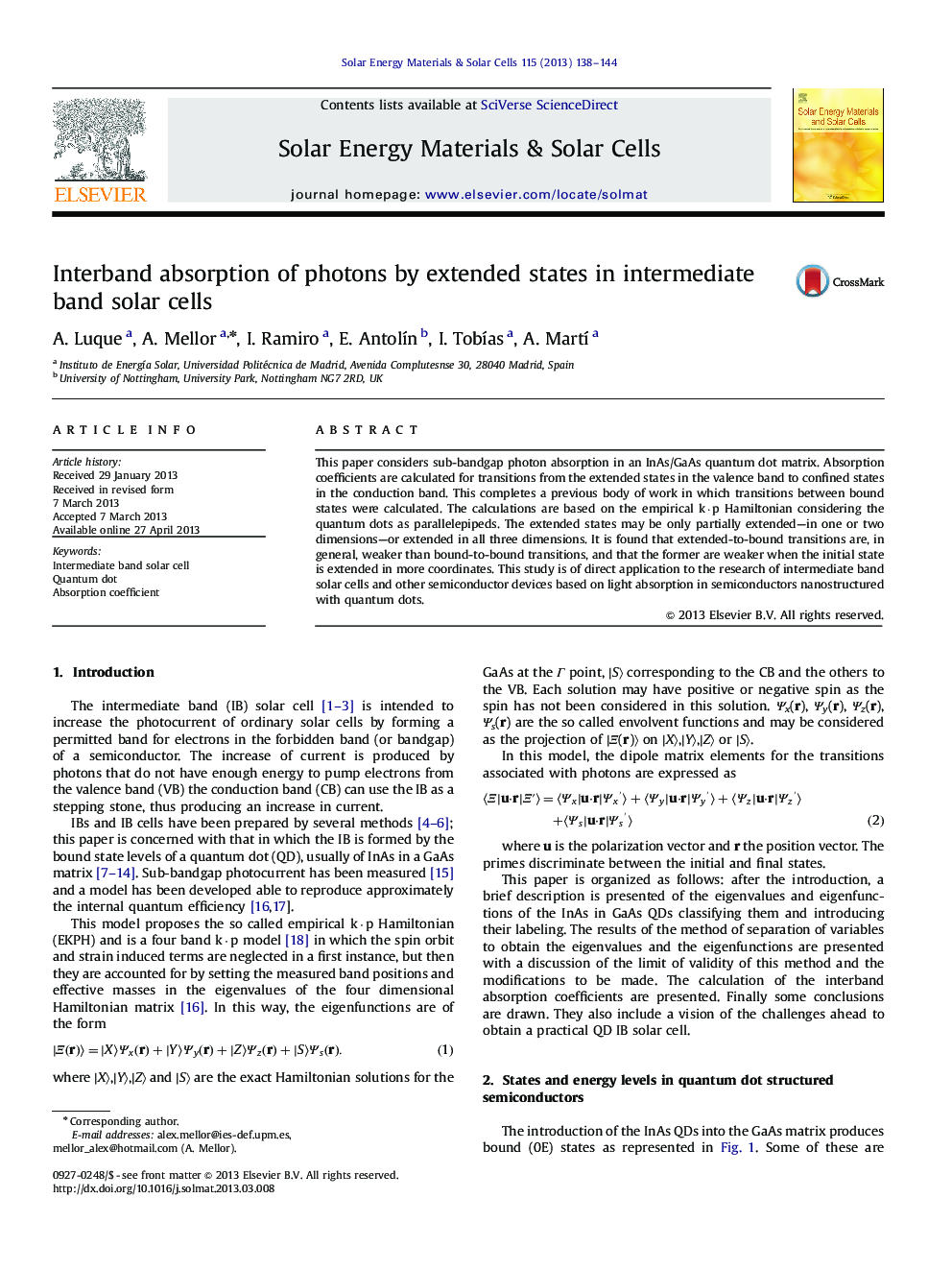| Article ID | Journal | Published Year | Pages | File Type |
|---|---|---|---|---|
| 78243 | Solar Energy Materials and Solar Cells | 2013 | 7 Pages |
•Interband absorption is calculated in an InAs/GaAs quantum dot matrix.•Calculations made using previously presented empirical k·p Hamiltonian.•Absorption between extended and confined states is negligible.•This confirms previous agreement between calculated and measured quantum efficiency.•Hence the overall model is validated.
This paper considers sub-bandgap photon absorption in an InAs/GaAs quantum dot matrix. Absorption coefficients are calculated for transitions from the extended states in the valence band to confined states in the conduction band. This completes a previous body of work in which transitions between bound states were calculated. The calculations are based on the empirical k·p Hamiltonian considering the quantum dots as parallelepipeds. The extended states may be only partially extended—in one or two dimensions—or extended in all three dimensions. It is found that extended-to-bound transitions are, in general, weaker than bound-to-bound transitions, and that the former are weaker when the initial state is extended in more coordinates. This study is of direct application to the research of intermediate band solar cells and other semiconductor devices based on light absorption in semiconductors nanostructured with quantum dots.
